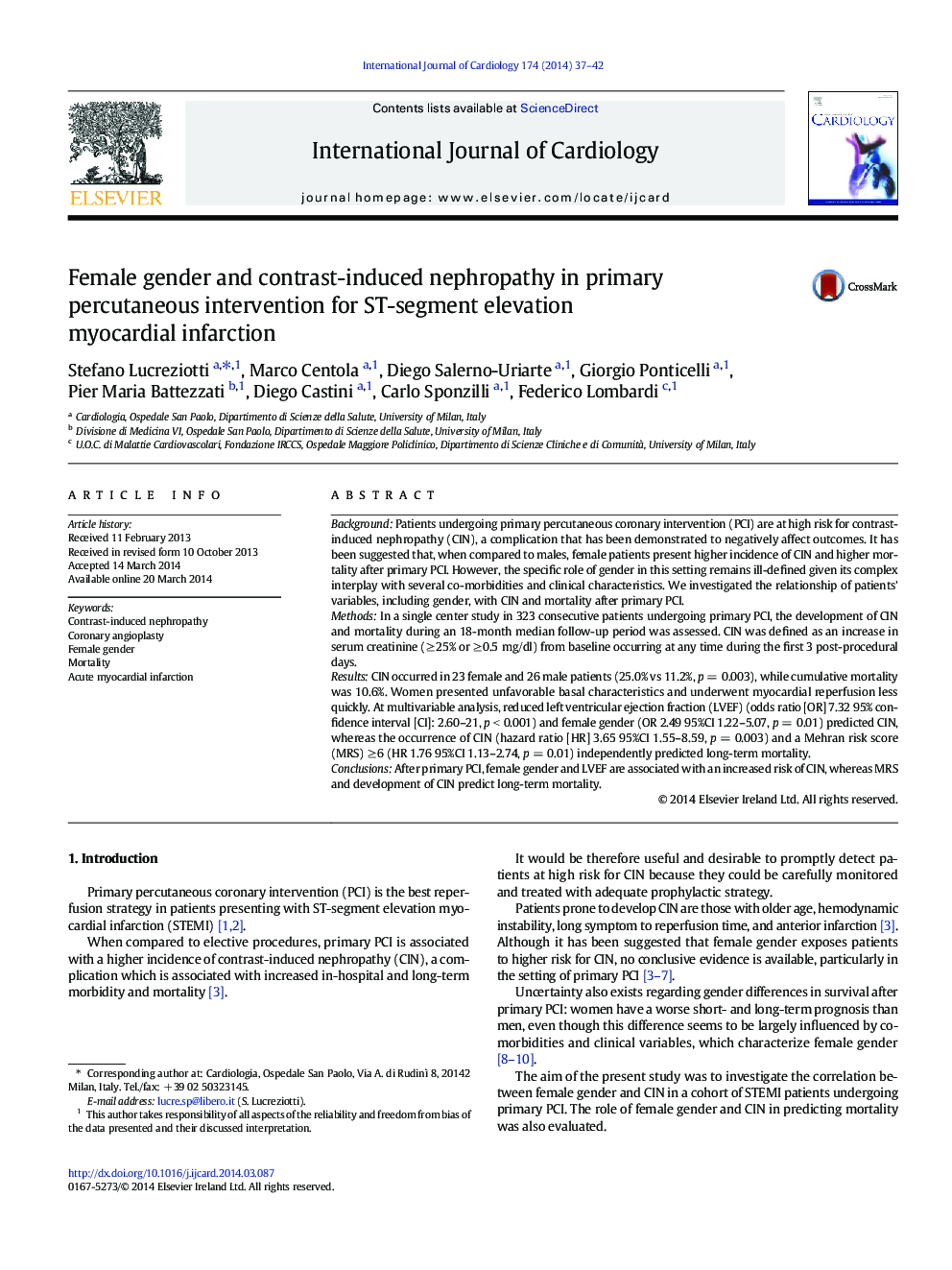| Article ID | Journal | Published Year | Pages | File Type |
|---|---|---|---|---|
| 5971342 | International Journal of Cardiology | 2014 | 6 Pages |
BackgroundPatients undergoing primary percutaneous coronary intervention (PCI) are at high risk for contrast-induced nephropathy (CIN), a complication that has been demonstrated to negatively affect outcomes. It has been suggested that, when compared to males, female patients present higher incidence of CIN and higher mortality after primary PCI. However, the specific role of gender in this setting remains ill-defined given its complex interplay with several co-morbidities and clinical characteristics. We investigated the relationship of patients' variables, including gender, with CIN and mortality after primary PCI.MethodsIn a single center study in 323 consecutive patients undergoing primary PCI, the development of CIN and mortality during an 18-month median follow-up period was assessed. CIN was defined as an increase in serum creatinine (â¥Â 25% or â¥Â 0.5 mg/dl) from baseline occurring at any time during the first 3 post-procedural days.ResultsCIN occurred in 23 female and 26 male patients (25.0% vs 11.2%, p = 0.003), while cumulative mortality was 10.6%. Women presented unfavorable basal characteristics and underwent myocardial reperfusion less quickly. At multivariable analysis, reduced left ventricular ejection fraction (LVEF) (odds ratio [OR] 7.32 95% confidence interval [CI]: 2.60-21, p < 0.001) and female gender (OR 2.49 95%CI 1.22-5.07, p = 0.01) predicted CIN, whereas the occurrence of CIN (hazard ratio [HR] 3.65 95%CI 1.55-8.59, p = 0.003) and a Mehran risk score (MRS) â¥Â 6 (HR 1.76 95%CI 1.13-2.74, p = 0.01) independently predicted long-term mortality.ConclusionsAfter primary PCI, female gender and LVEF are associated with an increased risk of CIN, whereas MRS and development of CIN predict long-term mortality.
